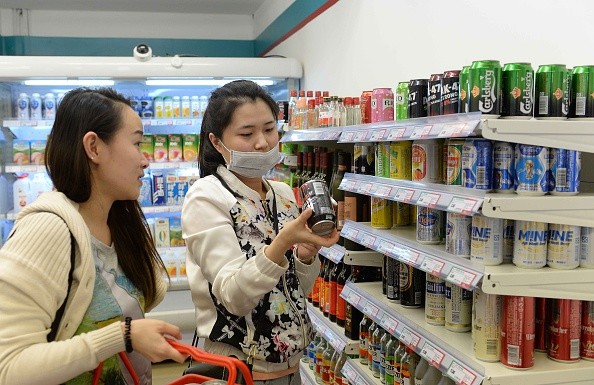Amidst gloom of a bearish economic growth, the Chinese government said on Friday that the country's gross domestic product (GDP) increased 6.7 percent during the first quarter of 2016, compared to the corresponding period in 2015. This was the most sluggish quarterly growth of the Chinese economy during the last seven years.
The pace of growth was, however, just as what the government had expected, but confirmed that the world's second largest economy was experiencing a sluggish trend. In the last quarter of 2015, China witnessed 6.8 percent economic growth, BBC reported.
China's National Bureau of Statistics (NBS) said that the country's GDP reached 15.9 trillion yuan ($2.4 trillion). NBS spokesperson Sheng Laiyun described the first-quarter economic performance as "a good start" to this year.
Contrary to the overall slow growth, some pockets have witnessed significant growth. For instance, the growth in investment in industrial assets as well as infrastructure was surprisingly higher by 10.7 percent since January 2016, compared to the corresponding period in 2016. In addition, it appeared consumers also increased spending, as retail sales registered a robust 10.5 percent leap for March. Even investment in real estate increased 6.2 percent, hastening from 1 percent throughout 2015.
Industrial production increased 5.8 percent from the 5.4-percent increase during the January-February period, Xinhua reported. The service sector too witnessed 7.6 percent growth, substantially higher compared to the 2.9 percent growth in the primary industry as well as 5.8 percent growth in the secondary industry. According Laiyan, this contributed to about 56.9 percent of the overall economy of the country.
This is somewhat appropriate with Beijing's recent endeavors to convert China from an export-oriented economy to a consumer-oriented one.
Meanwhile, China correspondents of various foreign media outlets have been actually struggling with the Communist nation's economic statistics, as they are not sure how accurate the statistics, including GDP figures, offered by the government agencies are.
It has been alleged that a number of Chinese provinces as well as companies have been overstating their production figures with a view to push themselves to the top slot. At the same time, there others who are believed to be under-estimating their performances in order to attract more support from the central government.
This is one reason why many economists are using the electricity consumption figures to measure the fiscal health of this country. Going by this standard, China would continue to grow, but maybe not at a very rapid pace.
Watch the video on China's economic growth below:



























